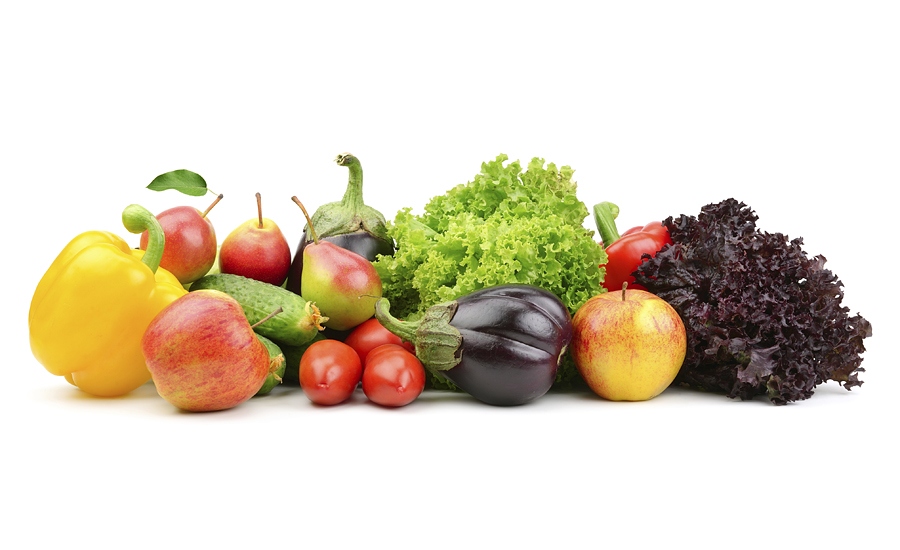More than one in three U.S. consumers are following a specific diet or eating pattern, and are increasingly averse to carbohydrates and sugar, according to the “13th Annual Food and Health Survey,” released by the International Food Information Council (IFIC) Foundation, Washington, D.C.
Given a list of diets to choose from or the option to write in a response, 36% of Americans reported following a specific eating pattern or diet within the past year, about 2.5 times the number (14%) from 2017 when it was an open-ended question.
The top eating pattern cited was intermittent fasting (10%). Diets considered at least somewhat restrictive of carbohydrates were well-represented, including Paleo (7%), low-carb (5%), Whole30 (5%), high-protein (4%) and ketogenic/high-fat (3%). Younger consumers (ages 18-34) were more likely to follow a specific eating pattern or diet than those 35 and above.
More Americans than in previous years blame carbs, and specifically sugars, for weight gain. While sugars continue to be the most cited cause of weight gain (33%), carbohydrates ranked second at 25%, up from 20% in 2017. Both of those numbers are the highest since 2011. Fats (16%), protein (3%) and “all sources” (17%) lagged behind when placing blame.
Cardiovascular health is top desired benefit
Almost all consumers are interested in getting specific health benefits from food or nutrients. However, the Top 2 desired health benefits in 2018 changed places from 2017. This year, 20% ranked cardiovascular health as their top desired benefit, followed by weight loss or weight management at 18% and energy at 13%. In 2017, those numbers were 16%, 32% and 14%, respectively.
But, consumers don’t know and remain confused about how to achieve these desired outcomes; only 38% are able to name a food they would seek out to help with their top health concern. Protein was most frequently identified (10%), followed by vegetables (7%), vitamins and minerals (5%) and fruits (4%).
“This dietary disconnect — the inability to connect specific foods and nutrients to desired health outcomes — illustrates the need for stronger, clearer, nutrition education based on the best available evidence,” says Joseph Clayton, chief executive officer of the IFIC Foundation.
Eight in 10 (80%) consumers said there is a lot of conflicting information about what foods to eat or avoid, a number similar to 2017. Of those people, 59% say that conflicting information makes them doubt their food choices, but the data show a troubling disparity among ethnicities, with those who doubt their choices as a result of conflicting information rising to 78% of Hispanic consumers.
Organics, “natural” and sustainability grow as priorities
“Food values” continue their growth as a factor in consumers’ decision-making, with organics increasingly popular in purchasing choices. When shopping for foods and beverages, 29% buy those labeled “organic,” up from 25% in 2017. The increase is even more significant when people eat out, as 20% said they eat at restaurants with foods and beverages advertised as organic compared to 14% last year.
Similarly, 37% of shoppers bought foods and beverages billed as “natural,” up from 31% in 2017, while 26% of consumers ate at restaurants with “natural” food and beverage options compared to 23% in 2017.
The importance of sustainability in food production also loomed larger in 2018, with 59% of consumers saying it’s important that the foods they purchase and consume be produced in a sustainable way, jumping up from 50% in 2017.
Out of those 59% who believe sustainability is important, their Top 2 most important individual factors of sustainability increased significantly over 2017. In fact, in 2018, 33% said reducing pesticides was their top priority, up from 27% in 2017, while ensuring an affordable food supply increased to 16% in 2018 from 10% last year.
Consumers favorable to the familiar, averse to the “artificial"
The key drivers behind consumers’ food and beverage purchases are largely unchanged in 2018. “Taste” still reigns supreme (as it has every year), with 81% saying it has at least some impact in their buying decisions, followed by familiarity (a new addition in this year’s survey, at 65%), price (64%), healthfulness (61%), convenience (54%) and sustainability (39%).
In the current communications environment, consumers are averse to artificial ingredients, at least compared to the alternatives. When asked to choose between two versions of the same product — an older one that includes artificial ingredients and a newer version that does not — seven in 10 (69%) chose the product with no artificial ingredients, while one-third (32%) chose the one containing artificial ingredients.
The survey also asked those who preferred a product with no artificial ingredients how much they would be willing to pay vs. a similar product with artificial ingredients that cost $1. Sixty-two percent would pay up to 10% more ($1.10) for the product without artificial ingredients; 42% would pay up to 50% more ($1.50); and 22% would pay double the price ($2).
Context is also key in how consumers perceive the healthfulness of two products with otherwise identical nutritional content. When asked to identify the healthier of two products with the same Nutrition Facts Panel, 40% perceived one labeled “non-GMO” as healthier vs. 15% for one with genetically engineered ingredients, and 33% believed a product with a shorter ingredient list was healthier than one with more ingredients (15%).
But, a significant change from 2017 was that 41% in 2018 perceived a fresh product to be healthier than a frozen one, which dropped from 47% last year, while 10% (in both 2017 and 2018) believed frozen products were healthier.
Trust in government agencies grows
This year and last year, consumers rated the sources where they receive information about what to eat or avoid, as well as how much they trust those sources.
Among 14 sources listed, government agencies recorded the biggest increases in both measures. In 2018, 19% of consumers said they often get such information from a government agency, nearly double the 11% in 2017, and 38% said they trust government agencies as an information source, up from 25% in 2017. (One caveat: This year’s question gave specific examples of agencies — USDA, EPA, FDA and CDC — whereas last year’s only mentioned government agencies in general.)
Friends/family members and personal healthcare professionals tied at 30% as the most relied-upon sources of information, however, healthcare professionals are far more trusted (66%) than friends and family (26%).
“Consumers continue to rely heavily on nutrition information sources they admit they don’t trust,” says Alexandra Lewin-Zwerdling, vice president for research and partnerships. “This may speak to the public confusion we have consistently found on topics of nutrition and food safety.”
For instance, Americans age 65 and older were more likely (76%) to trust a registered dietitian compared to adults age 35 and younger (65%). In addition, when asked which source of information most influenced their opinion on food safety issues, 44% of those age 65 and older cited news articles or headlines, while only 16% of those age 18-34 agreed.
Today’s dinner plates don’t match “MyPlate”
What Americans believe the experts recommend about which foods should fill an adult’s dinner plate isn’t too far off from the actual guidance from USDA’s MyPlate. But, when it comes to what Americans actually eat is a different story.
USDA’s “MyPlate” recommends that Americans’ plates be about half fruits and vegetables, with the rest of the plate divided up by grains (half of which should be whole grains) and protein, with dairy represented by a separate circle next to the plate. When consumers were asked which foods they believe experts recommend should fill their plates, they were on the mark with vegetables (30%) and fruits (21%), while protein (29%) and grains (20%) made up the balance.
What Americans really eat diverges from the recommendations, with protein leading the way at 38%, followed by vegetables (29%), grains (21%) and fruits (12%). About half (48%) said they include dairy often or always; only 2% said they never include dairy products.
Methodology
The results are derived from an online survey of 1,009 Americans ages 18-80, conducted March 12-26. Results were weighted to ensure they are reflective of the American population, as seen in the 2017 Current Population Survey. Specifically, they were weighted by age, education, gender, race/ethnicity and region. The survey was conducted by Greenwald & Associates, Washington, D.C., using ResearchNow’s consumer panel.







